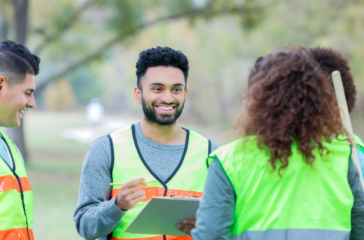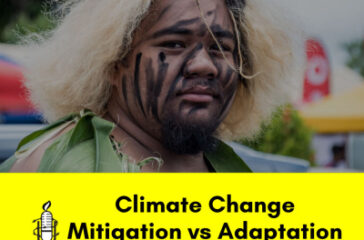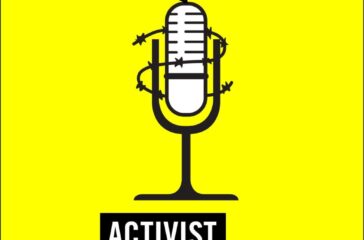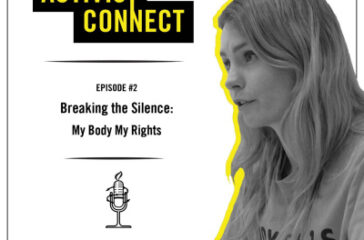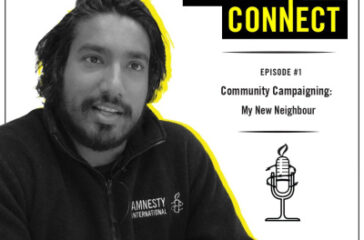Engaging the Public in Citizen Science to Promote Conservation
Citizen science contributes to the work of scientists, by engaging the public in activities that assist with observation and data collection, in many domains of science, including conservation, natural resources, and environmental science. Last week, when I jumped in my car and headed on what I thought was going to be a fun little road trip to see some turtles, I had no idea that I was visiting one of the most globally significant conservation programs for endangered sea turtles, and one of the most successful citizen science conservation efforts in the country. Citizen science programs, when planned and prepared effectively, like at Mon Repos, can also equip people with the information and tools to make significant positive changes to their local area and, most importantly, see direct outcomes of science and conservation efforts; making citizen science a promising tool for environmental protection and biodiversity, informing policymaking, fostering public input and engagement, and promoting direct action.
Citizen science builds scientific knowledge
‘Citizen science’ is when members the public engage in activities that assist scientists in their research— by submitting data, sharing experiences, or spreading valuable information. Scientists who often face resource or time constraints can benefit from having more data available to analyse and a pool of volunteers willing to help. Citizen science programs can vary in type and scope. Some involve simple data collection work at the local level— like bird watchers who give feedback to scientists about the birds they spot, while others are larger-scale projects that might require volunteers to study up and learn protocols before heading into the field.
Citizen science can be a rigorous process of scientific discovery, one that can produce high-quality data and add to our scientific knowledge, and there are many types of projects can benefit from citizen science, provided they are well designed and include the right method of public participation.
Citizen science is a powerful tool for tackling conservation challenges
Citizen science doesn’t just provide a way to collect data; it also engages the general public in scientific issues and can be a powerful way to tackle conservation challenges. In an article about the benefits of citizen science for conservation (1), the authors conclude that “citizen science informs natural resource management, environmental protection, and policymaking and fosters public input and engagement.”
Citizen science programs can also be a tool to inform and educate the public about conservation challenges, and some of the solutions to the problem.
One reason that members of the public aren’t motivated to address climate change and other local or global environmental challenges is that the impacts are relatively distant from their day-to-day life. But engaging people first-hand in these issues, and showing them the consequences that we face, stops it from being such an abstract concept, and motivates them to at a minimum care about the issue, and hopefully to act.
Case Study: Mon Repos Turtle Centre, Queensland
Mon Repos Conservation Park, 14 kilometers east of Bundaberg at the Southern part of the Great Barrier Reef, is a globally significant site for research on and protection of the endangered loggerhead sea turtle, a prehistoric species thought to have emerged around 40 million years ago. The unique ecological conditions at Mon Repos Beach support a key stage in the ancient life cycle of the loggerhead and two other species – flatback and green turtles.
While loggerhead turtles spend decades at sea reaching sexual maturity and forage and breed many hundreds (or thousands) of kilometers away, the beach at Mon Repos where they were born is where the females return to lay their eggs from November to February. In February and March, the final clutches of hatchlings make their way into the ocean and travel via the East Australian Current past New South Wales and New Zealand, before making their way to South America. Only 1 in 1000 of the turtles will reach maturity, at about age 30, when the lucky survivors return to Mon Repos. The others will face threats like plastic waste; by the time the hatchlings have made it from Bundaberg to the Gold Coast, 50% of them will have ingested plastic.
Only 1 in 1000 of the turtles will reach maturity… by the time the hatchlings have made it from Bundaberg to the Gold Coast, 50% of them will have ingested plastic.
Turtle research has been ongoing at Mon Repos since the late 1960s when biologist Colin Limpus began tagging turtles to study them. At the time he was a high school teacher, who would bring his students down to the beach to learn about the turtles. As he became increasingly interested in finding answers to his questions about the turtles— like how far and how long they travelled before returning to Mon Repos— Col took up researching the turtles full time.
From the 1990s onwards, when the waters off the coast were established as a marine park, ecotourism to the region grew, formalised through the design and construction of a visitor centre, and by 2013, the visitor centre at Mon Repos was receiving more than 30,000 people annually to experience night-time turtle nesting and hatching through a ranger-led “turtle encounter.” Each night, from October to March each year, the team at Mon Repos also spend the entire night collecting data for the research centre, protecting the eggs and turtles from predators, tagging hatchlings, and ensuring that the hatchlings make their way safely to sea. In order to do this, Mon Repos relies on volunteer citizen scientists to assist rangers in their data collection and efforts to care for the turtles, making it one of the longest-running citizen science projects in the country.
The inspiration for this article, was my own turtle encounter at Mon Repos. I was inspired by the ways in which decades of citizen science, that began with a curious high-school teacher, has created the world’s most significant loggerhead turtle conservation site, and aided the world’s understanding of the manifold ways that humans impact on species loss, including fishing-related harms, plastic ingestion, ocean contamination and, more recently, climate change.
This project is just one example of how citizen science has made, and will continue to make valuable contributions to our understanding of the natural world. One of the things that has made Mon Repos so successful is that it carefully matches the right type of science project and the right method of public participation.
Project design must carefully combine the needs of science with public involvement
When properly designed, carried out, and evaluated, citizen science can provide sound science, efficiently generate high-quality data, and help solve problems. However, if not carefully planned and prepared, efforts to involve citizens in science can become futile and resource intensive, with little benefits to either party. Citizen science should follow the same rigorous process of scientific discovery and be indistinguishable from conventional science— apart from the participation of volunteers doing fieldwork.
To help science or conservation groups plan an effective citizen science project, the Australian Citizen Science Association has 10 guiding ‘Principles of Citizen Science’ which should inform all citizen science projects:
Citizen science projects actively involve citizens in scientific endeavour that generates new knowledge or understanding. Citizens may act as contributors, collaborators, or as project leader and have a meaningful role in the project.Citizen science projects have a genuine science outcome. For example, answering a research question, informing conservation action, or facilitating policy decisions.Citizen science provides benefits to both science and society. Benefits may include learning opportunities, personal enjoyment, social benefits, the publication of research outputs, contributing to scientific evidence that can influence policy on many scales (locally, nationally, and internationally), and connecting the wider community with science.Citizen scientists may participate in various stages of the scientific process. This may include developing research questions, designing methods, gathering and analysing data, and communicating results.Citizen scientists receive feedback from the project. For example, how their data are being used and the research, policy or societal outcomes.Citizen science, as with all forms of scientific inquiry, has limitations and biases that should be considered and controlled for. However, unlike traditional research approaches, citizen science provides greater opportunity for public engagement and participation, increasing accessibility of science in society.Where possible and suitable, project data and meta-data from citizen science projects are made publicly available and results are published in an open access format. Data sharing may occur during or after the project, unless there are security or privacy concerns that prevent this from occurring.Citizen scientists are suitably acknowledged by projects. This may include acknowledgement in project communications, result reporting and publications.Citizen science programs offer a range of benefits and outcomes which should be acknowledged and considered in project evaluation. Communication and evaluation of projects could include scientific outputs, data quality, participant experience and learning, knowledge sharing, social benefits, capacity building, new ways of science engagement, enhanced stakeholder dialogue, and wider societal or policy impact.The leaders of citizen science projects take into consideration legal and ethical considerations of the project. These considerations include copyright, intellectual property, data sharing agreements, confidentiality, attribution, participant safety and wellbeing, traditional owner consultation, and the environmental impact of any activities.
Changemaker chat with a conservationist
While visiting Mon Repos, I met Elisha, who I’d previously only connected with online, for a changemaker chat for the podcast. Elisha is not only a ranger at Mon Repos turtle centre, but also combined her love for travel with her passion for conservation, to create her very own eco-travel company, Chasin Clean Coasts, and a podcast, Chasin Travels.
I got to chat with Elisha and hear all about her story, travel tips, and of course, what it was like starting her very own travel company… right before the coronavirus pandemic. With the world opening up for travel post-covid, I know that I’m super keen to get back out there and experience the world— and I definitely recommend Mon Repos if you’re ever on the QLD coast!
It was also great to be reminded that if you want to start your own business or passion project, you don’t need to have the whole path mapped out, you just need to take the first step, and figure out the next step as you go…

